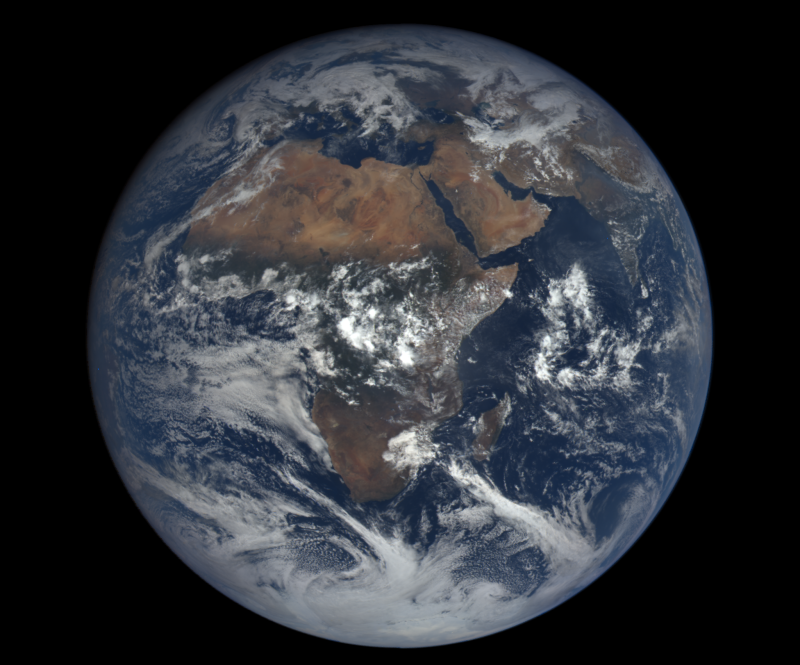According to NOAA, each daily sequence of images will reveal “the whole globe over the course of a day.” Image sequences from previous days will also be archived on the site and can be searched by date and continent.
The images will provide a brand-new, almost-real-time way to view Earth, but as NPR’s Joe Palca reported when the endeavor was announced, this project has been a long time in the making:
“Al Gore first proposed the idea for DSCOVR back in 1998, when he was vice president. Gore was so smitten with the view of Earth from space that he put an enormous print of a picture taken by Apollo 17 on the wall of his West Wing office. ‘Wouldn’t it be nice,’ Gore asked in 1998, ‘to have that image continuous, live, 24 hours a day?'”
“So he proposed sending a probe to a spot a million miles from Earth — a place known as the L1 Lagrange point, where the gravity of the Earth and the sun cancel each other out. The space probe, originally dubbed Triana, would point a telescope with a color camera back at our planet from L1, and send images down to Earth.”
NASA was willing to build the probe, and in order to maximize its usefulness, it also equipped it with devices to measure solar wind and energy coming from Earth. When Gore lost the 2000 presidential election, however, momentum for the project fizzled out — and detractors mockingly called it “GoreSat.”
Then, in 2009, the probe was resurrected when NOAA needed a new space weather satellite. So Triana was renamed, given a tuneup and, on Feb. 11, 2015, launched into space. Joe adds:
“Thomas Berger, head of NOAA’s Space Weather Prediction Center, calls DSCOVR ‘our buoy in space, if you will, that warns us of that solar tsunami coming toward the Earth. And we can get about an hour’s warning (at best) to prepare for the impact.’
“The military is also interested in early warning — so interested that the Air Force is actually paying to launch DSCOVR.
“‘There are things we can do to put our spacecraft or other systems in safe states — to minimize the damage that could be caused by any form of space weather,’ says Col. D. Jason Cothern, chief of the Air Force’s Space Demonstrations division. ‘Having that “heads up” would be very helpful.’
“So the revival of Triana is making the Air Force happy; it’s making NOAA happy; it’s making NASA happy. And it’s making one other person happy.”
“Today @NASA launched its site for #DSCOVR‘s daily images. I look forward to seeing more from #DSCOVR,” Gore tweeted Monday.
Copyright 2015 NPR. To see more, visit http://www.npr.org/.
9(MDAxOTAwOTE4MDEyMTkxMDAzNjczZDljZA004))

9(MDAxOTAwOTE4MDEyMTkxMDAzNjczZDljZA004))